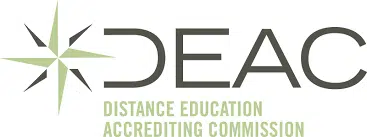Border Hopping & Visa Runs Explained (2025 Guide For TEFL Teachers)
Join a global community of over 200,000 TEFL teachers working throughout the world! Enrol me!
Have you ever come across the terms border hopping or visa run during your travels?
We recently conducted a survey with some of our TEFL teachers plying their trade across the world:
38% claimed that visas and paperwork were the most stressful part of moving abroad.
So, believe us when we say we know how much of a nightmare the admin can be.
All the red tape, required documents and procedures can be stressful (particularly when it’s in a foreign language)! Which is why we thought we would run you through all you need to know about border hops and visa runs, so you don’t need to panic.
What is a border hop?
First things first, what is a border hop?
Border hopping is when a traveller crosses the border of one country to another and comes back to reset a tourist visa.
Many tourist visas (especially in popular Asian countries) offer short-term stays of two weeks or 30 to 90 days for tourists. These visas are usually given on arrival and are either free of charge or come with a small fee.
Before this tourist visa expires, the tourist must leave the country and re-enter with a shiny new tourist visa.
It isn’t uncommon for tourists in, let’s take Bangkok for example, to jump in a minivan taxi early in the morning and book a trip to Aranyaprathet/Poipet at the Cambodian border. Once they have been processed and are officially in Cambodia, they simply turn around and head back into Thailand, hopping into a minivan and getting back to their touring.
Read more: How To Live & Work In Thailand As A Foreigner
So, who is most likely to take advantage of border hopping?
Generally, it is genuine tourists who want to stay a little bit longer in a specific country without applying for a long-term visa. Many companies today even offer private shuttle services whose sole purpose is to assist with border runs.
Equally, for many TEFL teachers and digital nomads, border hops are a quick solution when the tourist or short-term visa is about to expire, but they’re not ready to leave the country permanently.
Real world border hopping examples
- Thailand-Cambodia (Bangkok-Poipet crossing): One of the most infamous visa runs in Southeast Asia, where teachers and travellers leave Thailand, cross into Cambodia, and return the same day with a nice new visa.
- Vietnam-Laos: Many expats based in Hanoi or Da Nang take buses into Laos, spending a night or two, and then re-enter Vietnam with a fresh visa.
- Mexico-Guatemala: Common with North American travellers, this crossing allows an easy exit and re-entry for those on tourist visas.
⚠️ Important: The TEFL Academy doesn’t condone any illegal behaviour.
While border hopping is still possible in some regions, immigration authorities are tightening rules. Frequent border crossings can raise red flags, and a number of countries now limit the number of times you can re-enter on a tourist visa. Always check official embassy or immigration resources for the most up-to-date recommendations before planning your trip.

What is a visa run?
A visa run is practically the same as a border hop, but involves more preparation – though most nomads will use the terms visa run and border hopping interchangeably.
Some TEFL teachers enter a country initially on a tourist visa and find a job once they are in the country. In order to transfer the visa from a tourist visa to a work visa they need to cross a border.
This typically involves visiting the embassy in the country, signing papers, filling in countless forms, and hanging out for a few days. Entering into the country on a work visa gives you much more time in the country – usually a year. Often these visas are multiple-entry, which makes travelling out of the country far easier.
More crucially, it allows you to work legally in the country.
What are the differences between border hops and visa runs?
- Purpose: A border hop resets a tourist visa; a visa run secures a new or extended visa.
- Timeframe: Border hops can take just a few hours; visa runs may take days due to consulate visits and processing times.
- Paperwork: Border hops usually require a passport and entry fee; visa runs often involve application forms, passport photos, proof of funds, or supporting documents from an employer or school.
Common visa run examples
While border hops can be to any border, a visa run needs to be to a city which has the relevant embassy.
- Thailand-Laos: English teachers often travel to Vientiane to apply for education or work visas before re-entering Thailand.
- South Korea-Japan: Foreign teachers sometimes fly to Fuokuoka or Osaka to apply for brand new Korean visas at the consulate.
- Costa Rica-Nicaragua: Nomads frequently make this run to extend their stay in Costa Rica with a fresh visa.
⚠️ Important: Immigration officials have become increasingly strict with repeat visa runs. A lot of countries now discourage them by introducing new digital visa systems, e-extensions, or stricter entry caps. It’s always worth checking current policies before organising a visa run.
How to turn your visa runs and border hops into an adventure
Visas can be a tricky, sometimes confusing, business. It can be inconvenient to spend your weekend taking a train, only to have to come back immediately. The trick is to turn the whole experience into an adventure.
If you have the space in your calendar, why not turn your visa run into a holiday? With so many budget airlines to choose from these days, you can hop onto a flight to Laos to renew your Vietnamese visa, pop into Brazil if you’re in Argentina, or swing by Nicaragua if you’ve fallen for Costa Rica.
With a little planning ahead of time, a visa run can be turned from a dreaded Saturday spent in a minivan to an exciting holiday exploring somewhere new!
So, rather than worry about visa applications, endless red tape, and angry immigration officers, focus on the steaming bowls of pho you’ll soon be enjoying on the streets of Hanoi, the feeling of the salty sea breezes on your face as you stroll along the promenade of Cape Town, or the aroma of fresh coffee, mozzarella and gelato from your apartment in Rome!

TEFL teachers in action: Joshua’s story
I’ve been on visa run adventures with friends simply because a good adventure is too good to pass on.
Now picture this: a cold morning in Beijing. A South African wakes up and gets a notice from the school that the air quality will be so terrible that all classes are cancelled for five days.
It was an unexpectedly long break. One of my mates asked me if I’d like to go with him and one of his friends to Hong Kong for a visa run. I said that I like my visas like I like my steak: solid and safe. My dad was a high school principal, and he always insisted that I follow the right channels, but hey, no judgment from me.
A bullet train trip to Hong Kong seemed like an adventure! Halfway there, my friend kept complaining that it cost so much and would take so long, and that’s when our other friend showed us a website she had discovered: Atlas Obscura.
What a great site — it shows you all the places of interest, even for the smallest, most insignificant-looking three-sheep hamlet in the sticks. I insisted that we visit at least four of the suggested places.
The trip was amazing. We went island hopping, visited the showrooms of several famous toy companies, explored several incredible markets… and, of course, they got their admin sorted.
Thanks for sharing your story, Joshua! Sounds like an experience to remember to us!
To find out more about visas and visa requirements for your TEFL journey, read our helpful guide on TEFL Visa Requirements.
Accreditation & Quality Assurance
The TEFL Academy was the world’s first TEFL course provider to receive official recognition from government regulated awarding bodies in both the USA and UK. This means when you graduate you’ll hold a globally recognised Level 3 (120hr) Certificate or Level 5 (168hr) Diploma, meaning you can find work anywhere and apply for jobs immediately.
 United States
US
United States
US












